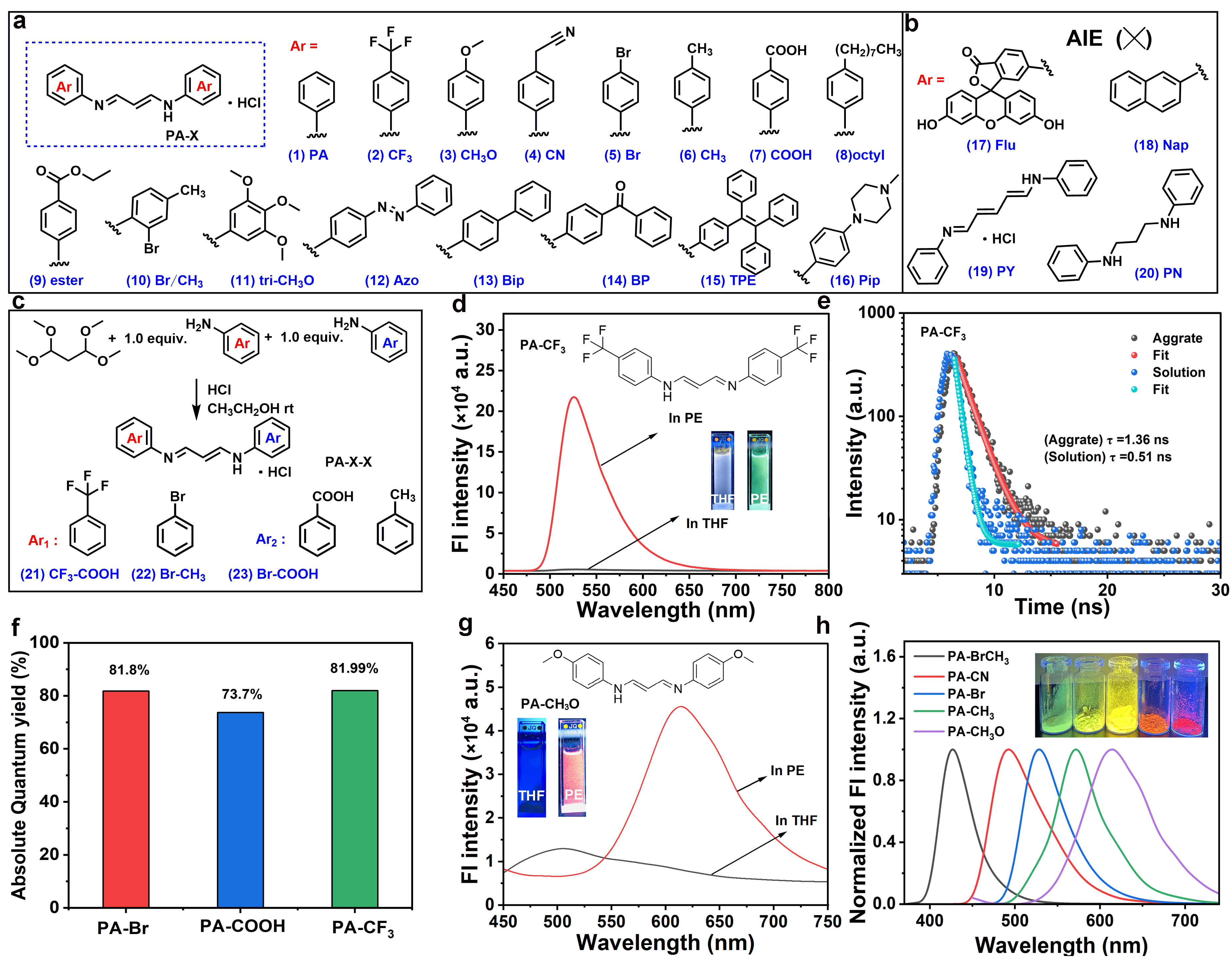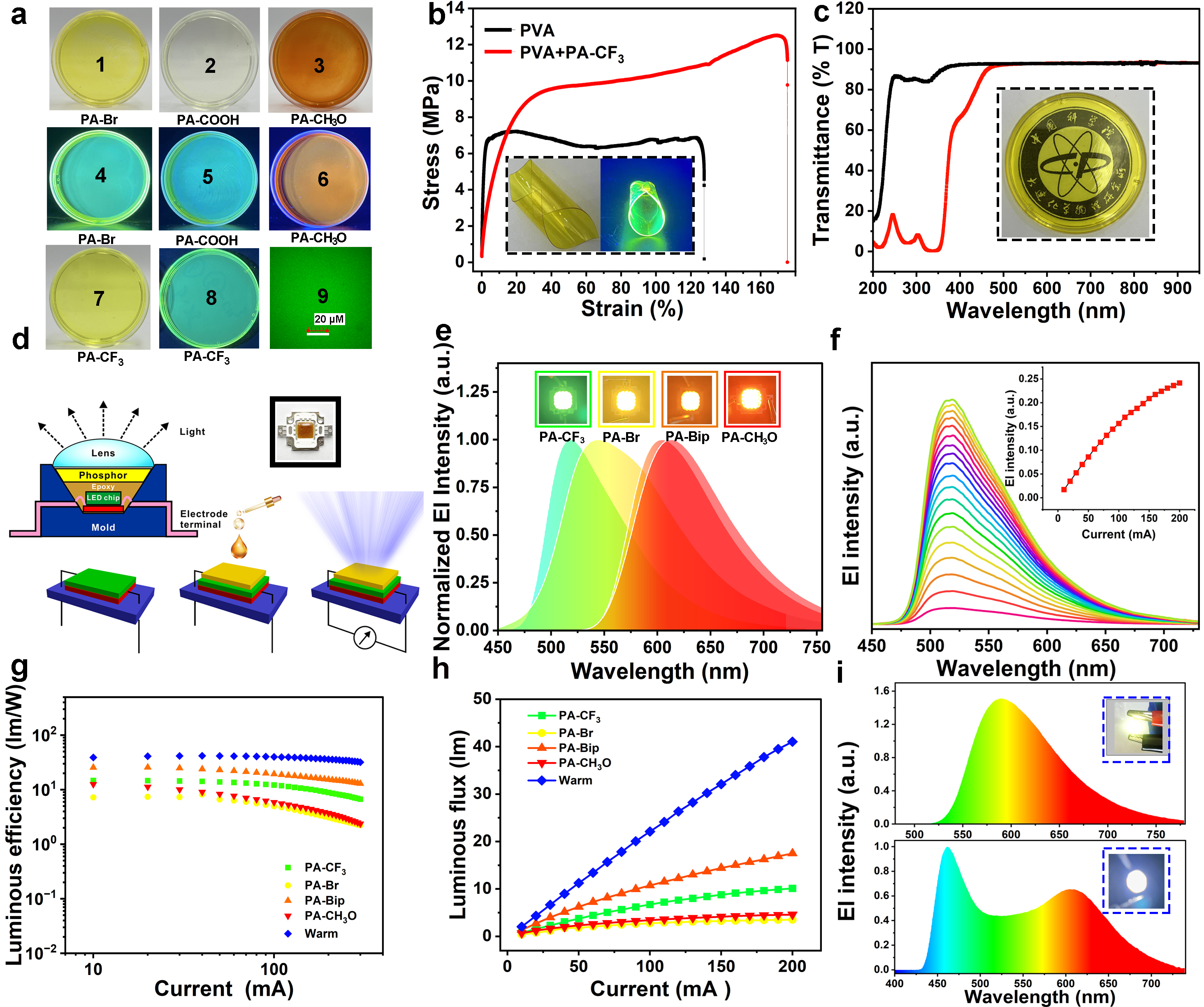Halogen Bond-Driven AIE Skeleton
Time:2023-04-26 21:55 Author:Yongxin Chang
Halogen Bond-Driven Aggregation-Induced Emission Skeleton: N‑(3-(Phenylamino)allylidene) Aniline Hydrochloride
Yongxin Chang, Haijuan Qin, Fusheng Zhang, Zhiying Yang, Yahui Zhang, Dongdong Wang, Ce Bi, Miao Guo, Wenjing Sun, and Guangyan Qing*
ACS Appl. Mater. Interfaces 2023, 15, 9751.
Aggregation-induced emission (AIE) is a unique photophysical process, and its emergence brings a revolutionary change in luminescence. However, AIE-based research has been limited to a few classical molecular skeletons, which is unfavorable for in-depth studies of the photophysical characteristics of AIE and the full exploitation of their potential values. There is an urgent need to develop new skeletons to rise to the challenges of an insufficient number of AIE core structures and difficult modification. Here, we report a novel dumbbell AIE skeleton, in which two phenyls are connected through (E)-3-iminoprop-1-en-1-amine. This skeleton shows extremely strong solid-state emission with an absolute quantum yield up to 69.5%, a large Stokes shift, and typical AIE characteristics, which well resolves the challenge of difficult modification and low luminous efficiency of the traditional AIE skeletons. One-step reaction, high yield, and diversified modification endow the skeleton with great scalability from simple to complicated, or from symmetrical to asymmetrical structures, which establishes the applicability of the skeleton in various scenarios. These molecules self-assemble into highly ordered layer-, rod-, petal-, hollow pipe-, or helix-like nanostructures, which contribute to strong AIE emission. Crystallographic data reveal the highly ordered layer structures of the aggregates with different substituents, and a novel halogen bond-driven self-assembly mechanism that restricts intramolecular motion is clearly discovered. Taking advantage of these merits, a full-band emission system from green to red is successfully established, which displays great potential in the construction of light-emitting films and advanced light-emitting diodes. The discovery of this AIE skeleton may motivate a huge potential application value in luminescent materials and lead to hitherto impossible technological innovations.

